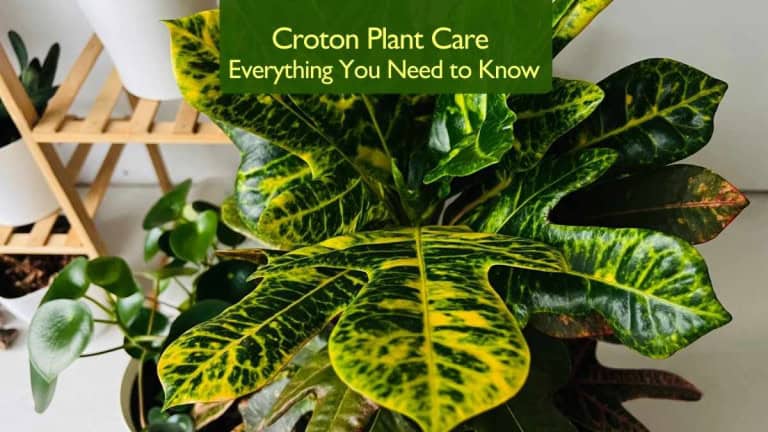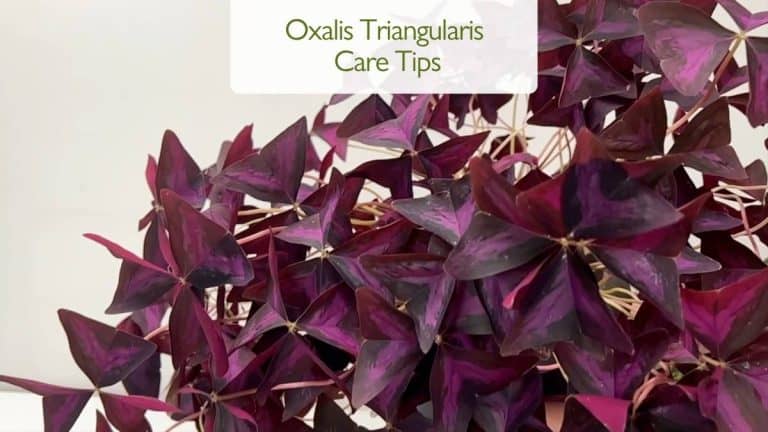Croton Plant Care: Everything You Need to Know
Crotons (Codiaeum variegatum) are among the most vibrant houseplants you can grow. Their bold leaves splashed with red, yellow, orange, and green instantly brighten up any room. But while they look tropical and cheerful, Crotons are known for being dramatic. Bring one home for the first time and you might see leaves dropping overnight, or colors fading if care isn’t just right.
Don’t worry, with the right approach, you can master Croton plant care. In this guide, I’ll walk you through everything you need to know, step by step. By the end, you’ll feel confident that your Croton can thrive and keep its stunning colors all year long. For beginners, Croton plant care may seem overwhelming, but it becomes easier with the right guidance.
Light Requirements
Light is the single most important factor in keeping your Croton colorful. These plants evolved in the tropics, where they receive hours of bright light every day. Indoors, they will survive in medium light, but their leaves will turn mostly green. To keep the rainbow of colors, you need to give them as much bright, indirect light as possible.
A south or west-facing window is ideal. If you only have an east-facing window, the plant will do fine, but the colors may not be as intense. In very low-light spaces, the plant will quickly lose variegation and may even drop leaves.
👉 Tip: If you notice that new leaves are mostly green, move your Croton closer to a light source or supplement with a grow light. For apartment growers, grow lights are often the secret to maintaining those fiery Croton colors. Light is the foundation of successful Croton plant care.

Watering Crotons
Watering is where most beginners struggle with Crotons. They like consistently moist soil – but not soggy. Too much water suffocates the roots and causes rot, while too little water makes the leaves droop dramatically or fall off.
The best method is to check the soil often. Stick your finger about an inch down:
- If it feels dry, water thoroughly until water drains from the bottom.
- If it still feels damp, wait another day or two.
During summer, Crotons may need water every few days, while in winter watering slows down. Don’t be surprised if your Croton sulks and drops a few leaves when you change your watering habits – they are sensitive to inconsistency.
💡 Pro Tip: If you tend to forget, use a Plant Watering Planner to log when and how much you watered. Keeping notes prevents overwatering and helps you learn your plant’s rhythm. Many Croton problems, like yellowing or falling leaves, start with irregular watering. Consistent watering is one of the trickiest parts of Croton plant care, but also one of the most important. For more details, see my full guide on How to Water Houseplants Properly.
Best Soil for Crotons
Soil makes a huge difference in Croton plant care. Heavy, compacted soil stays wet too long, which suffocates the roots. On the other hand, soil that dries out too quickly leaves your plant constantly thirsty.
A good Croton mix should be:
- Moisture-retentive – to stay evenly damp
- Well-draining – to prevent waterlogging
- Nutrient-rich – since Crotons are heavy feeders
The easiest option is to use a high-quality potting soil mixed with 20–30% perlite or coarse sand for drainage. Adding compost, worm castings, or coco coir can also boost nutrients and help maintain even moisture. Choosing the right soil mix is a key step in Croton plant care that ensures root health and steady growth.

Humidity and Temperature | Croton plant care
If your home is very dry, Crotons will let you know quickly. Low humidity makes the edges of the leaves turn crispy brown. Since Crotons are native to humid tropical environments, aim for 60–70% humidity for best results.
- Use a humidifier in winter, when heating dries the air.
- Place your Croton on a pebble tray with water to raise local humidity.
- Group it with other plants – they create a mini humid environment together.
Temperature is just as important. Crotons hate cold drafts and sudden changes. Keep them in a steady environment between 65–80°F (18–27°C). If temperatures drop below 60°F (15°C), expect dramatic leaf drop.
👉 Tip: Don’t move your Croton around the house too often. They adapt slowly, and frequent relocations cause stress that results in – you guessed it – more leaf drop. Humidity and temperature control are often overlooked in Croton plant care, but they make a dramatic difference in keeping leaves vibrant.
Fertilizing Crotons | Croton plant care
All that colorful foliage requires a lot of energy. Crotons are heavy feeders compared to many houseplants. During the growing season (spring and summer), feed with a balanced liquid fertilizer every 2–4 weeks.
If your Croton’s leaves look dull or growth seems slow, a lack of nutrients might be the reason. Just don’t overdo it – too much fertilizer can burn the roots and cause leaf damage. Always follow dilution guidelines. In fall and winter, cut back on feeding, since the plant naturally slows down.
Regular feeding is another step in Croton plant care that helps maintain vibrant colors and healthy growth. If you prefer natural options, try my Homemade Organic Fertilizer Recipe for Houseplants – it’s safe, effective, and provides the nutrients Crotons need without harsh chemicals.
Pruning and Shaping
Crotons can grow tall and leggy over time. Don’t be afraid to prune them back. Cutting stems encourages the plant to branch out and become bushier. The best time to prune is spring, when the plant is actively growing.
Always use sharp, clean scissors, and wear gloves. Croton sap can irritate skin, so it’s better to be cautious. Remove yellow or damaged leaves as you go – this helps the plant redirect energy into new, healthy growth. Pruning is not just for looks; it’s an important part of Croton plant care that encourages fuller plants and fresh foliage.
Repotting Crotons
Crotons like to be a little snug in their pots, but eventually they outgrow them. If you see roots circling the surface of the soil or poking through drainage holes, it’s time to repot.
Choose a pot just one size bigger, and refresh the soil completely. Repotting every 2–3 years keeps the plant happy and encourages growth. After repotting, expect some leaf drop as the plant adjusts – this is normal.
Repotting is an essential Croton plant care step that gives roots more space and prevents them from becoming pot-bound.
Propagating Crotons
Want more Crotons without buying new ones? They can be propagated through stem cuttings.
Here’s how:
- Take a 4–6 inch cutting with at least three healthy leaves.
- Dip the cut end in rooting hormone (optional but helpful).
- Place the cutting in water or moist soil.
- Keep it in a warm, humid spot with bright, indirect light.
Rooting may take several weeks. Covering the cutting with a plastic dome or bag helps keep humidity high, which speeds up the process. Propagation is a rewarding part of Croton plant care, especially if you want to multiply your collection.
Common Croton Problems
Crotons are sometimes called the “drama queens” of the plant world. They drop leaves when stressed, sulk when moved, and show problems quickly if care isn’t right. But the good news is that they bounce back once conditions improve.
- Leaves dropping: Usually caused by stress – moving the plant, drafts, inconsistent watering, or sudden changes in light.
- Faded color: Not enough light. Move it closer to a window or add a grow light.
- Brown edges: Low humidity or inconsistent watering.
- Yellow leaves: Often linked to overwatering.
Most Croton plant care problems can be traced back to watering, light, or humidity. Once you adjust these factors, your plant usually recovers.
👉 I’ll cover these in detail in my follow-up article: Croton Plant Problems: 5 Mistakes to Avoid!

Pests on Crotons | Croton plant care
Like many houseplants, Crotons can sometimes attract pests. Their colorful leaves make them eye-catching not only to us but also to insects. The two most common issues are spider mites and mealybugs.
- Spider mites are tiny but destructive, often leaving fine webbing and speckled, faded leaves behind. Once they show up, they can spread quickly across your plant collection. Learn how to protect your Croton in my full guide: Spider Mite Protection for Houseplants.
- Mealybugs appear as white, cottony clusters on stems and leaf nodes. They feed on sap and weaken your plant over time. I’ve shared a safe and easy method for getting rid of them here: How to Get Rid of Mealybugs FAST.
Checking your Croton’s leaves regularly and acting quickly at the first signs of pests is a vital part of Croton plant care.
Are Crotons Pet Safe?
Crotons are toxic to pets if eaten, so keep them out of reach of cats and dogs. The sap can also irritate skin, so it’s best to wear gloves when pruning or propagating
If you’re looking for safer alternatives, check out my guide to Pet-Friendly Houseplants.
Conclusion for Croton plant care
Crotons may be dramatic, but they’re also some of the most rewarding plants to grow. Their fiery leaves can turn a corner of your home into a tropical paradise. Yes, they might drop a leaf or two to show they’re unhappy, but once you understand their needs – light, water, soil, humidity, and nutrients – they become a stunning, long-lasting centerpiece.
With patience and consistency, Croton plant care becomes second nature. Once you master it, you’ll enjoy their brilliant colors season after season.
Related Topics
- Anthurium Laceleaf Care Guide
- Rubber Tree (Ficus Elastica) Plant Care
- Ponytail Palm Problems: 5 Mistakes to Avoid + Care Tips
- How to Water Houseplants Properly
- Pet-Friendly Houseplants
💚 Do you have a Croton at home? How do you keep yours colorful and happy? Share your experience in the comments below and inspire other plant lovers!
Watch Next: Ficus Elastica Tineke Care Problems
If you love colorful foliage like Crotons, you’ll also enjoy the beauty of Rubber Plants. Watch my video on Ficus elastica Tineke care Problems to learn how to keep this stunning variegated plant healthy and thriving:
Click here to watch the video on YouTube
Explore More Music for Your Plants & Stay Connected!
Check out my Playlist: Music for Plants and find the perfect tunes to help your plants and yourself thrive.
Don’t forget to visit my YouTube Channel Plant House & Garden and subscribe — your support means the world to me!
Connect with me on social media for more plant care tips and music updates: Instagram | Facebook | X | Pinterest | Reddit | TikTok
Love plants? Love music? Don’t miss out on new updates – hit subscribe and follow now to keep your plants happy and your space vibrant!







